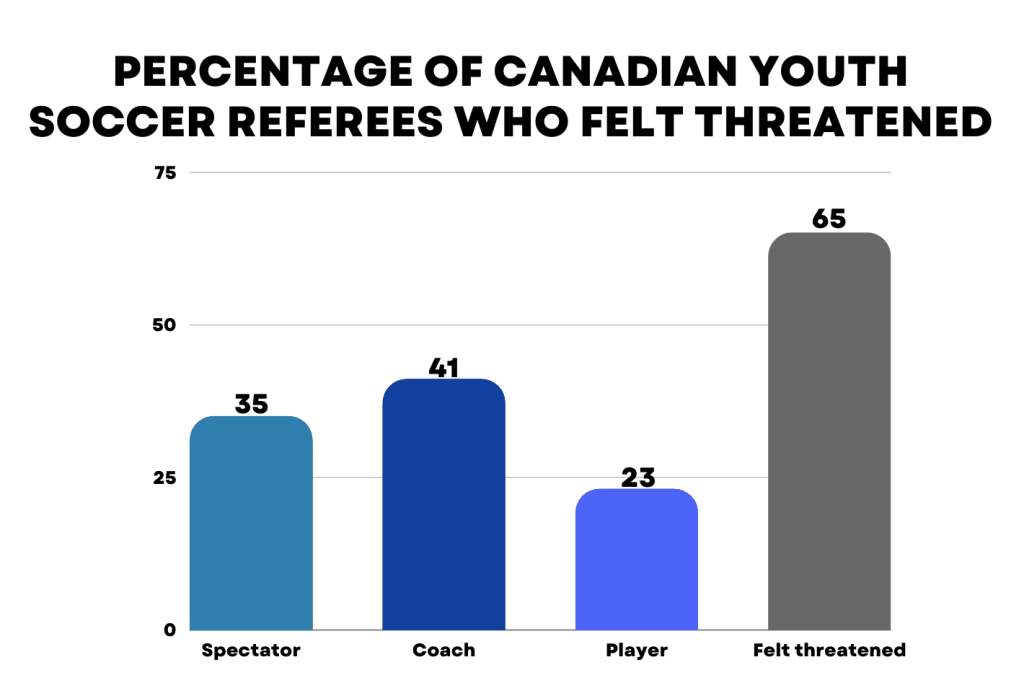Violence is defined as nonessential behaviour that is intended to cause harm. It takes the form of psychological, verbal, economic, physical, and sexual abuse. Common examples include child maltreatment, school bullying, and family and community violence. The abuse of referees, which ranges from shouting and berating to physical threats and assaults, is violence, and it is a serious problem in Canada and worldwide.
Referee Abuse Worldwide
In a study by one of our members, Dr. Webb, examining European adult soccer referees, 68% of French and 51% of Dutch officials reported being verbally abused, and 16% and 14%, respectively, reported being physically abused.
In a National Association of Sports Officials (NASO) survey of 17,000 American referees, close to half of the respondents “felt unsafe or feared for their safety” because of the behaviour of spectators, coaches, or players and the most common setting for this abuse was youth games.
Referee Abuse in Canada
In a recent survey of Ontario match officials, 65% youth referees reported being abused. It’s important to note that this survey did not include the referees who quit.
In the Ontario Soccer survey, the most common form of abuse youth reported was heckling (65%), but a shocking 41% of youth indicated that they had been verbally or physically threatened. Ontario referees of all ages stated that the youth competitive level was the place where most of the abuse took place. Youth referees were mostly threatened by coaches (41%) and spectators (35%), who are almost always adults. See the bar graph below.

Consequences
There are several consequences of referee abuse, including referee attrition, stress, and physical and mental health effects caused by workplace violence.
Workplace Violence
The glaring issue with youth competitions being the most abusive environment for referees is that youth soccer referees almost exclusively officiate youth games. This means that far too many Canadian youth are being abused by adults in the workplace.
Exposure to workplace violence and bullying in adults is reliably associated with poorer mental health such as increased anxiety, depression, and stress-related complaints, more sleep problems, and more physical health problems, including cardiovascular disease and type 2 diabetes. This pattern holds true for adult referees as well.
Studies on workplace violence in youth are broadly non-existent, a striking gap in knowledge given that 60% of Canadian adolescents are employed, and the imbalance of power is present by virtue of the young age of adolescent employees.

